The contents of the book have been separated into three categories, each set individually in date order. The first treats the reflections of the generals on the National Socialist State, the progress of the war and the internal differences resulting from these discussions (Documents 1–82). The second category documents conversations on war crimes (Documents 83–144), the third those conversations which refer to the 20 July Plot (Documents 145–67). In selecting documents, the author has been at pains to provide a representative cross-section of material split into the ratio in which they occur overall in the source. The transcripts are reproduced from the original archive. Since the conversations are verbatim, some may appear stilted or disconnected. Where portions have been omitted this is indicated by elipses, where a name or location is uncertain it is followed by an interrogation mark. Some abbreviations are indicated by square parentheses. In the original protocols, speakers were identified by initials.
Each SRX, SRM and SRGG document is headed: ‘This report is most secret. If further circulation is necessary, it must be paraphrased so that neither the source of the information nor the means by which it has been obtained is apparent.’ Most GRGG transcripts have at the head an extensive list of all prisoners overheard during the period of the report, identified by name, rank and date of capture. For reasons of space herein such lists have not been reproduced.
SRX, SM and SRGG documents each cover only a single conversation. The more comprehensive GRGG papers contain several conversations. The start of a new conversation is indicated by an extra line space in the text. As a rule only extracts of GRGG documents have been published here, but where they are the extract is in full.
The WO 208 protocols exist in the original German text accompanied always by an English translation. Documents 142–4 in this book are only available in the archives in English translation.
The book concludes with short biographies of all 85 personalities who lend their voice to the protocols. These biographies give brief career notes together with an assessment of character and political stance which the CSDIC prepared on most of the German officers at Trent Park. German Army assessments of the time were not particularly useful: in June 1943, Generalleutnant Rudolf Schmundt, Head of the OKH Personnel Office, complained that the frequent employment in personnel files of expressions such as ‘he stands on National Socialist ground’ were so vague as to be virtually useless for making judgements of an officer. [14] Schmundt’s activity report, 24/25 June 1943, p. 75.
The CSDIC (UK) character studies [15] Unless otherwise stated, all are to be found in TNA WO 208/3433, 3504. Duplicates are filed as SRGG reports in WO 208/4363.
were probably elaborated by Lord Aberfeldy, but this is not absolutely certain. It should also be noted that from the British point of view a ‘Nazi’ might be a general whose position in the political spectrum was not known but whose conduct or appearance was overtly Prussian. Aside from this reservation, the CSDIC (UK) assessment is important for being of a neutral character based on week- or month-long observations of a personality at Trent Park who for most of the time was off his guard.
2. Secret Monitoring of Prisoners of War in Great Britain and Trent Park PoW Centre
During World War II probably all the belligerents listened-in secretly to their prisoners. The general rule seems to have been that the interrogation of selected prisoners was documented, but not the private conversations. Richard Overy has published the protocols of National Socialist leaders under interrogation in 1945–46. [16] Overy, ‘Verhöre’.
Other trials were run by the United States, Great Britain, Germany and the Soviet Union. [17] For USA see Blair, ‘Der U-Boot-Krieg’, Vol. 2, p. 949; for Germany see ‘Report on Special Installation at Dulag North and Dulag Luft’, TNA WO 208/3554. The only known German document is a general report mentioning eavesdropping installations (‘Abwehrstelle im Wehrkreis VI’, B No. 445/43 g II Kgf, v. 29.7.1943 in BA/MA RH 49/112), but additionally see, ‘Dulag Nord Abwehrstelle. b. MOK Nordsee’, B. NR.G1123/44 ET 7.6.1944 re technical interrogation of crew members of Canadian destroyer Athabaskan , sunk 29.4.1944: BA/MA RM 7/1261. German generals were at least occasionally eavesdropped on by the Soviets; see Leonid Reschin, ‘Feldmarschall im Kreuzverhör’.
As far as is known, it was the British who perfected eavesdropping as a method of intelligence gathering. At Farm Hall in Cambridgeshire, the conversations of the interned German nuclear physicists were secretly recorded in the attempt to discover how far Germany had advanced towards building an atomic bomb, [18] ‘Hitler’s Uranium Club’, see D. Hoffmann, ‘Operation Epsilon’.
but the British did not disclose their practice of having listened-in systematically to selected prisoners of war for several years before that.
The British intelligence service began planning to use the method from the beginning of the war. On 26 October 1939, orders were given to set up the Combined Services Detailed Interrogation Centre. Initially under MI9, from December 1941 it fell within the ambit of the British Army’s newly formed MI19 Department at the War Office under Lt-Colonel A. R. Rawlinson. All reports originating at CSDIC were to be distributed to the three arms of service for collation with other information, e.g. signals intercepts and air reconnaissance photographs, to compose a specific intelligence picture. [19] CSDIC (UK) was subordinate to the Joint Intelligence Sub-Committee, the Inter-Service Topographical Unit (RN) and the Central Interpretation Unit (RAF, air reconnaissance). The comprehensive weekly Intelligence Summaries are at TNA AIR 22 and TNA ADM 223. For the value of prisoners of war for the overall intelligence picture, e.g. in the Battle of Britain, see K. Jones, ‘From the Horse’s Mouth’, where brief mention is made of the practice of eavesdropping on Luftwaffe crews. See also Fedeorowich, Axis Prisoners of War.
The CSDIC organisation in England was complemented later by a centre in North Africa (CSDIC Middle East) and from the autumn of 1944 another in France/Germany run by the US Army (CSDIC West).
The UK interrogation centre had modest beginnings: in September 1939, only six officers (three Army, two RAF and one RN) had been appointed to question German prisoners at the Tower of London. In December that year the centre was relocated to Trent Park, a large mansion with extensive grounds near Cockfosters, north of London. German prisoners of war – in the early years a manageable number of Luftwaffe and Kriegsmarine men – together with Italian prisoners were ‘pre-sorted’ in transit camps by the PoW Department and those believed to have important knowledge were sent to Trent Park for comprehensive questioning and the secret monitoring of their conversations.
CSDIC (UK) used a variety of refined tricks to tap the required knowledge. ‘Cooperative’ prisoners and German exiles were used as stool pigeons to get conversations moving along the desired track [20] In their PoW camps the British used a total of 49 secret informers who reported on 1,506 prisoners. See Hinsley, ‘British Intelligence’, Vol. 1, p. 282f. Cf. CSDIC (UK), p. 6, TNA WO 208/4970.
while prisoners of equal rank but from different units or arms of service would be bunched together. This method paid off: U-boat men would air their experiences at length, airmen would explain the technology of their aircraft and combat tactics in great detail to naval comrades. Army men arrived at Trent Park relatively quickly after capture – from a few days to a couple of weeks. They would often still be suffering the dramatic effects of their capture, perhaps having narrowly escaped death – and would be anxious to talk about their experiences.
Читать дальше

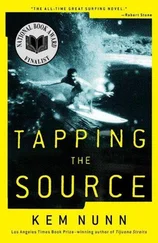
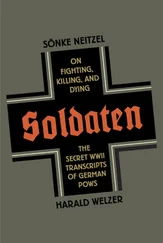

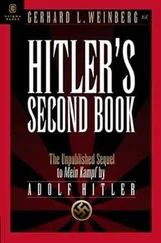
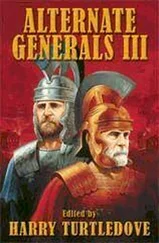
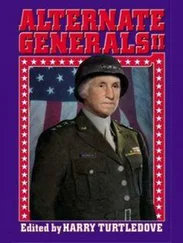

![Traudl Junge - Hitler's Last Secretary - A Firsthand Account of Life with Hitler [aka Until the Final Hour]](/books/416681/traudl-junge-hitler-s-last-secretary-a-firsthand-thumb.webp)



